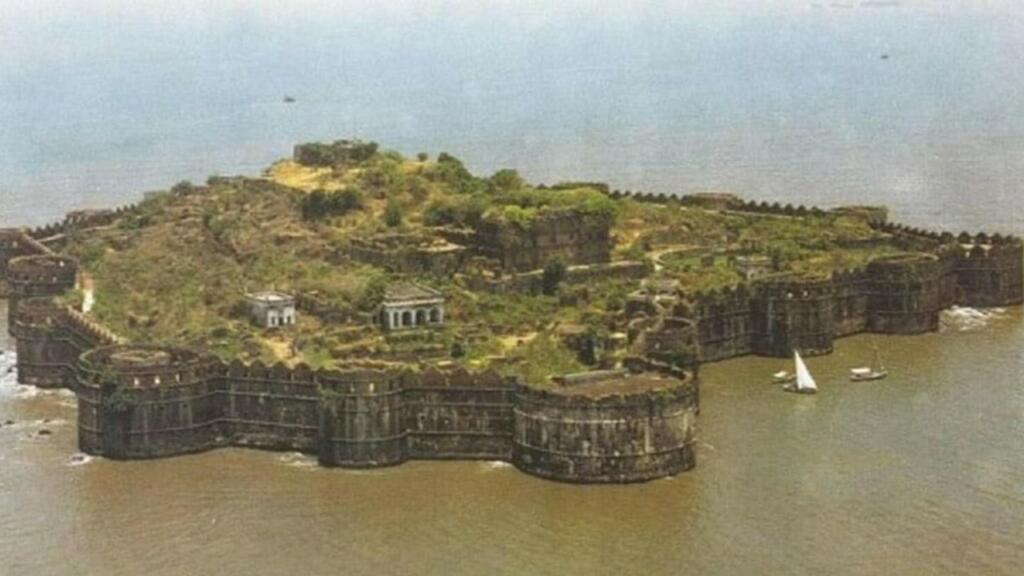Murud Janjira Fort history: India is a land of forts and palaces, each with its own unique history and architectural brilliance. However, many of these forts remain unknown to the masses and are often overshadowed by the grandeur of famous foreign landmarks. Indians take pride in travelling abroad to witness famous monuments such as the Rock of Gibraltar, while they fail to appreciate the marvels that their own country has to offer.
One such fort that has not received its due recognition is the Janjira Fort, situated on the west coast of India, close to Mumbai. In this article, we will delve into the history of this unique fort, its strategic significance, and the fierce battles fought to conquer it.
Murud Janjira Fort History
The Janjira Fort, also known as the Murud Janjira Fort, is an extraordinary artefact from a strategic and naval perspective. It is the only fort on the west coast of India that has never been conquered. The locals call it the Ajeya Fort, which means invincible. The fort was built by Siddiqui Jauhar and took 22 years to complete. It is spread over 22 acres and has 22 security posts, making it one of the most well-guarded forts in India. The foundation of the fort was laid by fishermen who built an embankment known as Medhekot to protect themselves from robbers.
The Murud Janjira Fort is situated 90 feet above sea level, and its foundation is 20 feet deep. It is believed to be 350 years old and was initially built by Burhan Khan, who was appointed by the Nizam to build Bhakkam Fort. However, the fort was taken over by the Siddis, who came from Ethiopia, and developed it into an impregnable fort. The fort’s strategic significance is evident from the presence of cannons at each end of the fort and creatures in the water area near the fort, which were enough to drive away any invader.
One of the most unique features of the Murud Janjira Fort is that it has only one door, which can be accessed from the front. However, there is also a secret door from where a tunnel passes 60 feet below the sea, leading up to the village of Rajapuri. The tunnel was built to provide an escape route for the king and his family in case of an enemy attack.
Also Read: Kalinjar Durg – A fort with infinite stories
Fort was “impregnable” till 1947
The Murud Janjira Fort remained invincible for nearly three centuries, from 1617 to 1947. Even Chhatrapati Shivaji Maharaj, who was known for his military prowess, failed to conquer it. When Chhatrapati Sambhaji Maharaj learned about this, he built a strong fort named Padmadurga, located five to six kilometres away, to take possession of the fort. The Marathas under the leadership of Naji Surve and Chimajirao Appa finally conquered the fort in 1736, during the rule of Peshwa Baji Rao. However, the Marathas could not retain possession of the fort as it was handed over to the Siddis along with the forts of Janjira, Gowalkot, and Anjanvel in a peace agreement.
The Murud Janjira Fort is a testament to India’s maritime history, and its uniqueness lies in the fact that it has never been conquered despite numerous attempts. The fort’s construction by fishermen and subsequent development by the Siddis gives us an insight into the multicultural influences that shaped India’s history.
It is an excellent example of Indian architecture, engineering, and military strategy, and yet, its history remains unknown to many. The Janjira Fort is a reminder to Indians that they should appreciate the beauty and significance of their own country’s landmarks before seeking out foreign ones. This was the history of Murud Janjira Fort which was “impregnable” till 1947 and we should proud of it.
Support TFI:
Support us to strengthen the ‘Right’ ideology of cultural nationalism by purchasing the best quality garments from TFI-STORE.COM
